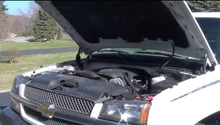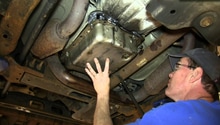Chevrolet Silverado 2007-2013: What Are Signs of a Bad Transmission?
Transmission problems vary across the board. And while some are just irksome, some can leave you stranded in the middle of nowhere. The following article lists some of the many symptoms, and discusses two of the most common causes.
This article applies to the Chevrolet Silverado 2nd Generation (2007-2013).
If your transmission isn’t acting right, its undesirable behavior could include one or more of the following:
- Taking too long to shift; the engine revs higher than normal RPMs before a shift happens.
- Making hard shifts, which occur with a noticeable clunking noise and shudder.
- Slippage in all gears.
All of the above issues can be the result of numerous causes, including a failing torque converter. But it’s not always that straightforward. Note that a transmission making hard shifts can also be doing so because the engine is missing/misfiring (that is, not achieving optimum power for some reason). When this happens, the PCM compensates by modulating the shifts as if the engine was straining under a heavy load, resulting in a bumpy shift pattern. Note also that shifting into and out of high gear can be a problem with the overdrive shift parameters, and not be an indicator of a serious transmission fault.
Most experts agree that there are two primary causes of transmission failure. They are:
- The infamous transmission “limp home mode:” when it won’t upshift or downshift out of the gear it’s in.
- Transmission “slippage:” when it acts like it’s in "neutral", but it’s actually in "drive."
But if your transmission is acting badly, well in advance of doing anything else there are a few things you should check out.

Materials Needed
- Metric socket wrench
- Socket set
- Two sturdy floor jacks
- Trolley jack
- OBD-II scan tool
Step 1 – Check the RPO codes
The place to start is inside your glove box. This is where you’ll find a sticker with all the RPO (regular production option) codes.
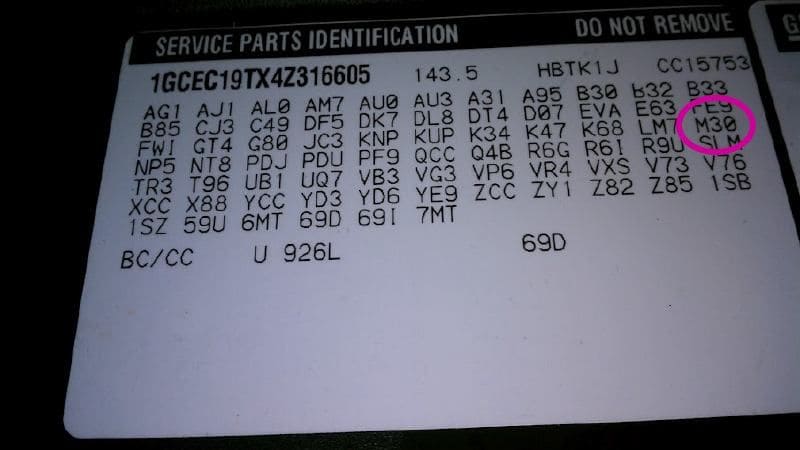
The transmission code will begin with an “M.” The venerable 4L60-E has the code M-30, the 4L65-E is M-32, and there are other versions.
If you're not throwing a code, then continue on to Step 2.
Step 2 – Check the transmission fluid
If the transmission fluid is low, this could be the cause of any transmission problems you’re having. Plus if it is low, because an automatic transmission is a sealed system, the cause is generally from a leak, which is a serious problem in and of itself.
The fluid should be clean and have a pinkish-red color, as well as a sweet smell. When it becomes dark red it needs to be replaced. If it’s dark brown and smells burnt, this also signifies a serious mechanical problem with the transmission, as does any metal shavings seen floating in the fluid.
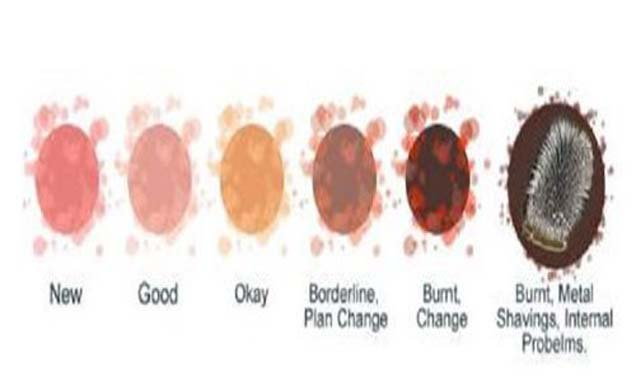
If the fluid is fine or “in the pink,” keep looking for symptoms in Step 3.
Step 3 – Check the range selector cable, sensor circuit, and linkage
Check for any damage to the range selector cable. If any is found, replace it.
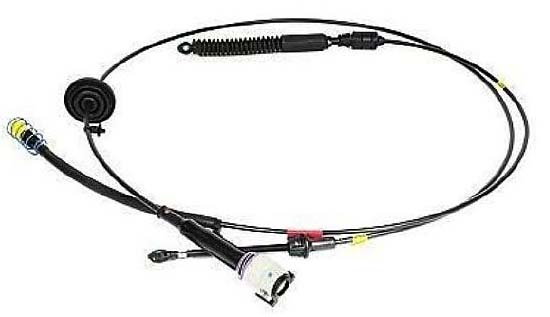
Also, inspect the transmission range sensor circuit for any physical anomalies. If this circuit fails, the “Check Engine” light should come on.

And make sure there are no obstructions to the linkage.

If there was no damage found in any of the parts, then proceed to Step 4.
Step 4 – Check the transmission solenoid or sensor failure
This one is the primary cause of transmission failure in these trucks. An electronically controlled 4L60-E has several solenoids and sensors that the PCM working through the TCM uses to control upshifts and downshifts. If any one of these sensors/solenoids fail or the fuse(s) that supplies current to the solenoids gets blown, the transmission will go into "limp home mode."
However, if this failure does not involve any “slipping,” a transmission failure is usually a solenoid-related issue only.
When a transmission solenoid fails, the “Check Engine” light will come on and one or more of the following OBD-II transmission diagnostic trouble codes could be generated:
If you have transmission control system malfunction codes, including solenoid valve problems:
- P0700: Transmission Control System Malfunction
- P0751: 1-2 Shift Solenoid Valve Performance
- P0753: 1-2 Shift Solenoid Valve Electrical
- P0756: 2-3 Shift Solenoid Valve Performance
- P0758: 2-3 Shift Solenoid Valve Electrical
If the speedometer does not work and there are vehicle speed sensor problems:
- P0500: Vehicle Speed Sensor Malfunction
- P0501: Vehicle Speed Sensor Range/Performance
- P0502: Vehicle Speed Sensor Low Input
- P0503: Vehicle Speed Sensor Intermittent / Erratic/High
If the transmission goes into "limp home mode:"
- The transmission stays in only one gear, regardless of speed.
- The engine feels under-powered, as it starts out from and stays in second gear.
- The engine is over-revving, as it’s trying to go at highway speeds in second gear.
Thus, a solenoid or sensor problem will generate one or more diagnostic trouble code, the transmission won’t “slip,” and it goes into and remains in “limp home mode.”
The end result with the "better" problem: you’ll need to replace some solenoid valves and/or sensors.

If the transmission and solenoid are okay and in working condition, then resume on with Step 5.
Step 5 – Check for internal damage
This is the second most common cause of transmission failure. The biggest clue to this situation is that the transmission is now “slipping.” And if the transmission failure involves “slipping,” the failure is usually caused by internal damage.
If gear ratio error codes are generated by the PCM, which indicates that the transmission is slipping:
- P0730: Incorrect Gear Ratio
- P0731: Gear 1 Incorrect Ratio
- P0732: Gear 2 Incorrect Ratio
- P0733: Gear 3 Incorrect Ratio
- P0734: Gear 4 Incorrect Ratio
If the transmission behaves strangely:
- Won’t go into First Gear, the vehicle doesn’t move.
- Won’t go into Reverse, but Drive works.
- During acceleration, suddenly shifts into Neutral.
In addition, instead of shifting into First Gear before you come to a stop, the transmission will now shift into First AFTER you’ve stopped, causing a physical jolt. Upon inspection, there will typically be visible sediment and/or metal shavings in the transmission oil pan—the true proof that internal transmission damage has occurred.
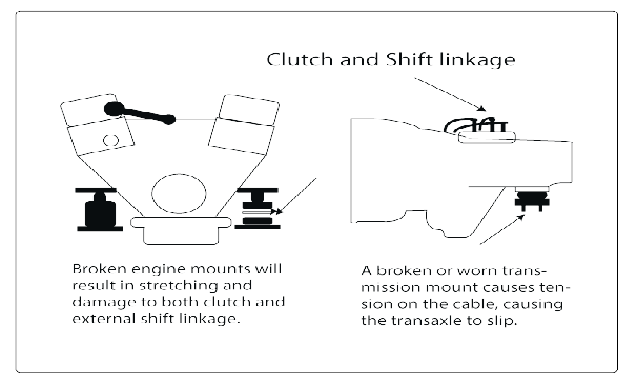
The end result with the "worse" problem: you'll need a transmission overhaul, or a rebuild.
Related Discussions
- Torque Converter Symptoms - ChevroletForum.com
- Hard Shifting First and Second Gear - ChevroletForum.com
- Truck Going Into Limp Mode, Help! - ChevroletForum.com
- 2008 Silverado Transmission Issue - ChevroletForum.com
- Silverado Transmission Problem - ChevroletForum.com





